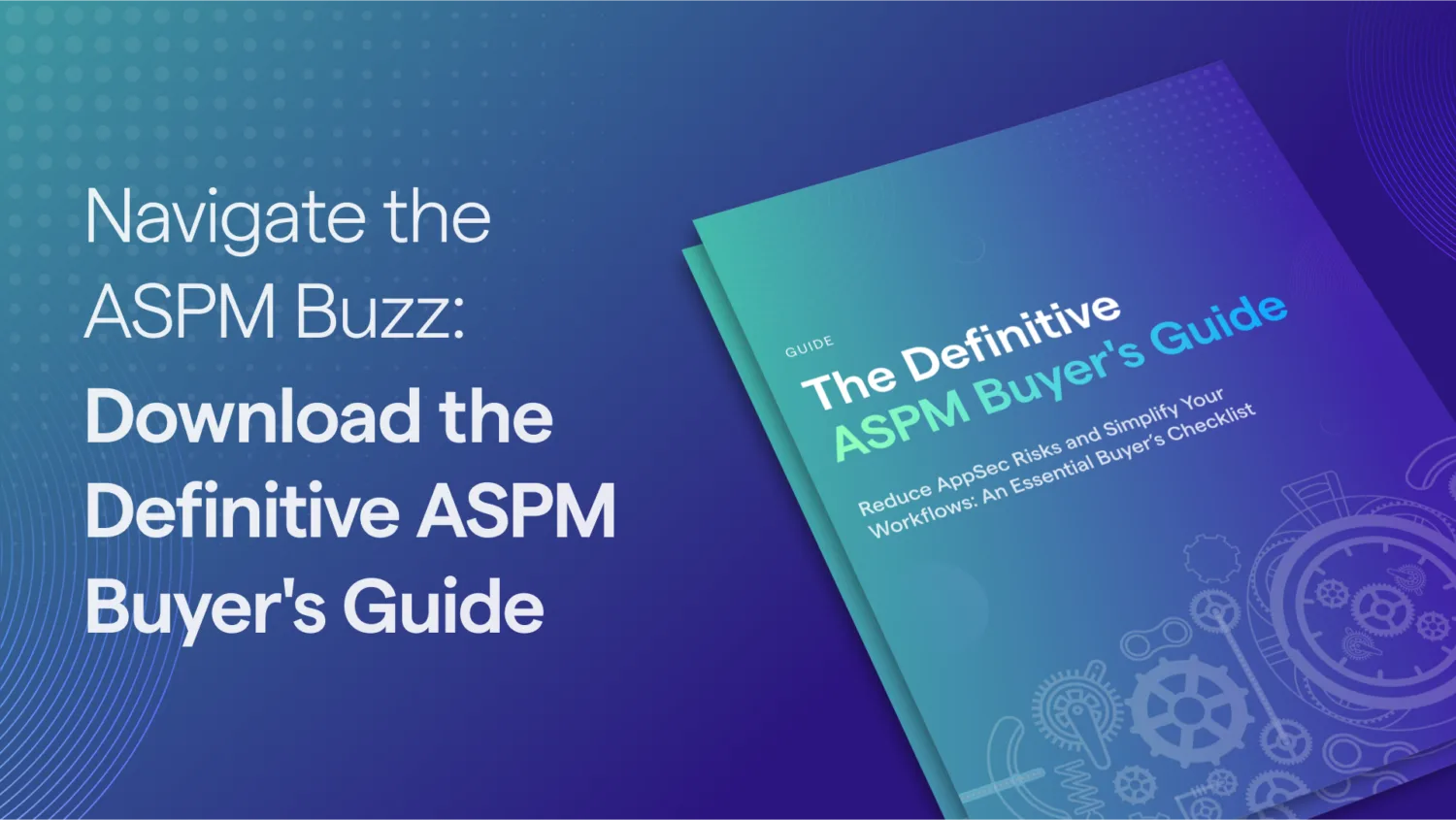Feeling overwhelmed by the constant barrage of security vulnerabilities plaguing your applications and infrastructure? You’re not alone. Organizations everywhere are grappling with these challenges, seeking efficient ways to manage and mitigate risks. Application Security Posture Management (ASPM) has arisen as a response to this common challenge.
However, there is a lot of confusion and noise around Application Security Posture Management. Different industry voices define ASPM in a multitude of ways. So from the perspective of a security leader, how do you get to the core of the ASPM hype and determine if and how an ASPM fits into your security program?
The Definitive ASPM Buyer’s Guide is designed to help you answer exactly that. The best place to start is to dig into the answer to the question: “what outcomes does ASPM drive and what is the reason that organizations are adopting these platforms?” If you’re clear on the role that ASPM plays in enterprise security programs and what you would want it to do for you, you’ll have much firmer footing when evaluating ASPM offerings.
The three primary goals behind the adoption and usage of ASPM can be summarized as follows:
- Reduce risk: No security program can or should fix everything. What the business cares about is the state of risk, not the number of vulnerabilities. ASPM helps prioritize the vulnerabilities that truly matter by unifying and correlating findings with business context and threat intelligence. It reduces noise, enabling security teams to focus on significant risks and protect the business effectively.
- Burn down security tech debt: Developers often ship features faster than security teams and processes can secure them. As a result, security teams face a growing backlog of security tech debt and often struggle just to prevent it from spiraling out of control. ASPM helps teams handle this by unifying governance across the entire business and automating and orchestrating remediation workflows to help security teams reduce security debt by over 80%.
- Simplify complexity: By necessity, modern security programs involve numerous specialized tools to properly scan and secure all the different environments, languages, and technologies of modern software. This is the best approach for securing software, but has the consequence of creating a lot of complexity. ASPM offers holistic governance, breaking down silos and streamlining workflows, maintaining robust coverage of a modern application security program without chaos.
The Definitive Buyer’s Guide explores questions and context like this, and helps security leaders cut through the noise to approach evaluating and understanding ASPM successfully. Read the guide to dig into:
- The hype around ASPM: Learn why ASPM is gaining attention and becoming essential in modern security programs.
- ASPM’s role in real-world security programs: Discover how ASPM fits into security programs at real organizations.
- Assessing your readiness for ASPM: Find out how to determine if your organization is ready for ASPM and if an ASPM is useful for your specific organization in the first place.
- Evaluating ASPM solutions: Get practical tips for assessing different ASPM offerings to find the best fit for your organization.
This guide will also help you assess your security program across three critical dimensions: technology, process, and people. You’ll walk away with a clear roadmap to take your AppSec program to the next level.
Don’t let the security vulnerability deluge hold you back. Download the Definitive ASPM Buyer’s Guide today and start determining if and how ASPM can fit your security goals and program.




